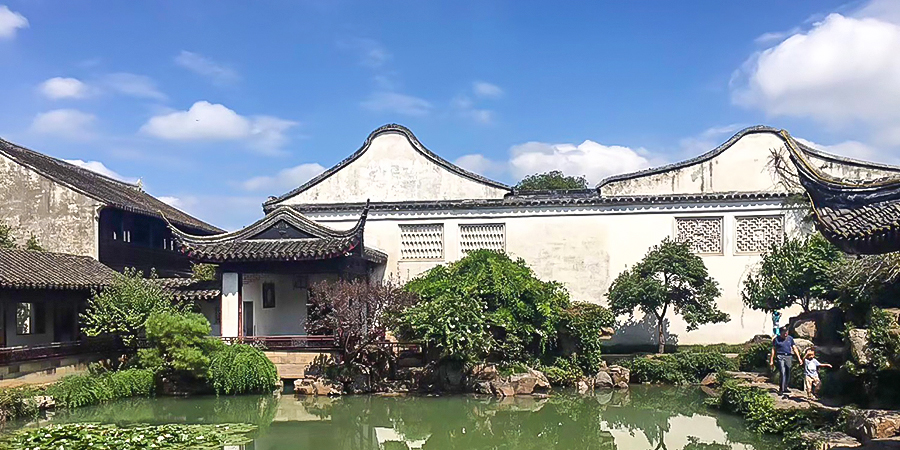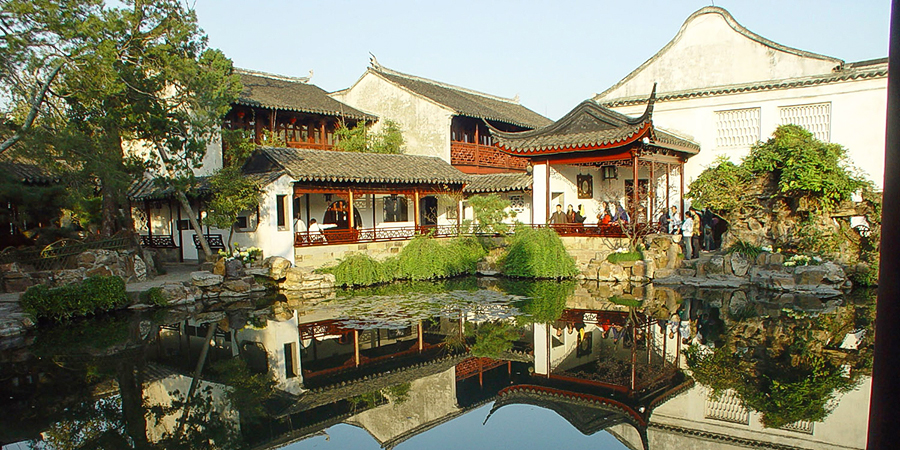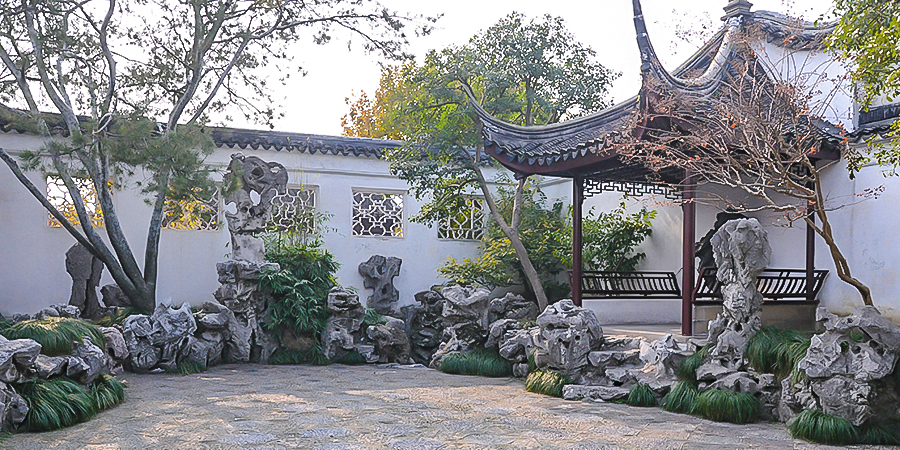Sometimes the smallest package can contain the most magnificent gift. The Master of Nets Garden is a clear example of this. It is the smallest of the Suzhou residential gardens, yet it is the most impressive because of its use of space which creates the illusion of an area that is much greater than its actual size. Even more than the architectural achievement is the mood of tranquility and harmony that it embodies.
This exquisite Master of Nets Garden was first designed during the
Southern Song Dynasty (1127-1279) as a residence for a government official. At that time, the garden was named "the Hall of Ten Thousand Books" because the owner housed numerous books in three studies within the garden. Later on, it went through vicissitudes in different dynasties until an official named Song Zongyuan bought and restored the garden around 1765 in the
Qing Dynasty (1644 - 1911). It is said that in a moment of frustration with bureaucracy he declared that he would rather be a fisherman than a bureaucrat. Therefore, he changed the name of this garden to "Wangshi Yuan", meaning a fisher’s garden in English, to express his will.
The Master of Nets Garden is divided into three sections: a residential section, the central main garden and an inner garden. The main garden has a large pond that is surrounded by pathways and a variety of buildings such as the Ribbon Washing Pavillion (Zhuoying Shuige) and the Pavillion for the Advent of the Moon and Wind (Yuedao Fenglai Ting). There are many more buildings that are situated so that there is never a sense of crowding, but always of spaciousness. As is common in
Suzhou gardens, the pond has a small pavilion in it. Here the pavilion is accessible by a bridge that is less than one foot wide.
As you walk about the gardens and along the walkways, you can often see beautiful flowers or plants through delicate windows which frames the scenery from a distance and draw you to a single sight, a moment of peaceful natural beauty. As you walk through the buildings, it is easy to imagine the life that the original residents lived in a feudal society where these gardens were solely for their pleasure and the pleasure of their guests.
The various buildings are constructed so that you can always access the main garden from any room. The rooms themselves are quite impressive in design and ornamentation and well represent the style of the Song Dynasty.
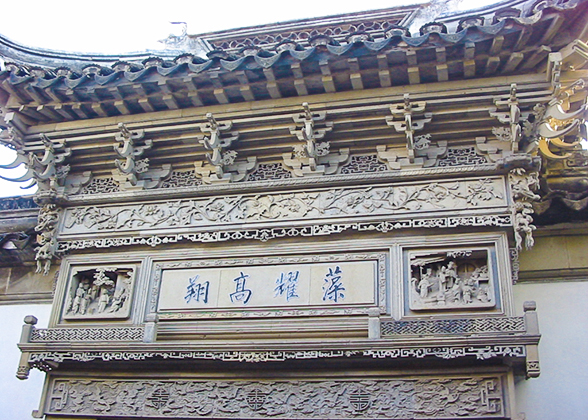 | | The Famous Gatehouse | | 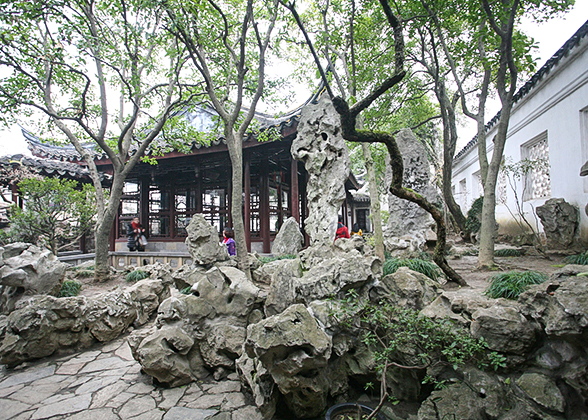 | | Rockeries in the Garden | |
The inner garden Dian Chun Yi which is only about 660 square feet, has the distinction of being used as the model for the Ming Hall Garden at the Metropolitan Museum of Art in New York City and also completely miniaturized for an exhibit in the Pompidou Center in Paris in 1982. This garden is reputed to be the most well-preserved one in Suzhou and should not be missed. It is small in size, but is like a beautifully cut diamond whose beauty is of everlasting fascination and pleasure.
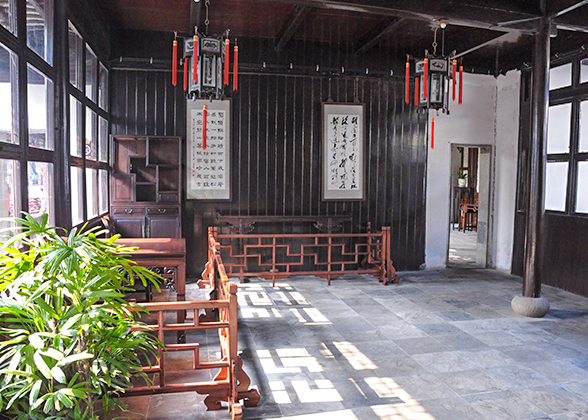 | | The Elegant Furniture | | 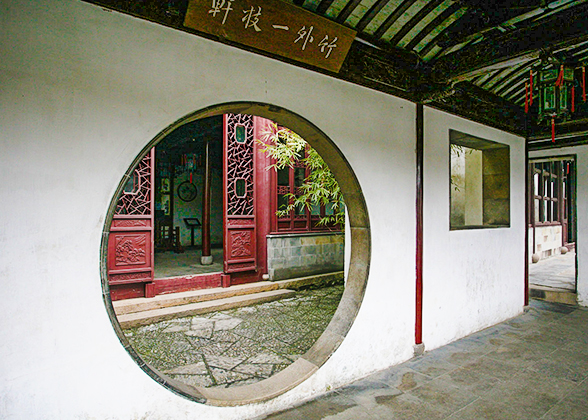 | | The Classic Round Door | |
Night Garden Tour
A Night Garden Tour is arranged daily from the end of March to October. Visitor can not only admire the night view of the gorgeous Master of Nets Garden, but also enjoy entertainment activities of local color, such as Kun Opera, Ping Tan (ballad singing) and dance performances. Schedule of Shows
| Lacation | Show | Time |
| Wanjuan Hall | Tianguan Cifu | A: 18:30, 18:50, 19:10, 19:30, 19:50, 20:10, 20:30, 20:50, 21:10, 21:30
B: 18:35, 18:55, 19:15, 19:35, 19:55, 20:15, 20:35, 20:55, 21:15, 21:35
Other shows: 19:00, 19:20, 19:40, 20:00, 20:20, 20:40, 21:00, 21:20, 21:40, 22:00 |
| Xiexiu Building | Dance Show: Seamstress |
| Ti Yun Shi | Ping Tan |
| Zhuwai Yizhixuan B | Live-action performance: The Peony Pavilion |
| Yuedao Fenglai Ting A | Live-action performance: The Peony Pavilion |
| Dian Chun Yi | Traditional Instrumental performance: Guqin & Xiao |

The schedule is only for reference.
Transportation
1. Take bus no. 202, 529, 931, 9003, 9006, Gusu Tourist Line 2 and get off at Wangshiyuan Station.
3. Take tourist bus no. 501, 9010 and get off at Wangshiyuan West Station.
Suzhou Bus Search Admission Fee and Opening Time
| Admission Fee | Daytime | April, May, July, August, September and October: CNY 40
January, February, March, June, November and December: CNY 30
* Note:
1. Children below 4.6 feet (1.4m) or under 6 and seniors over 70 can enter for free.
2. Minors aged 6-18 and seniors aged 60-70 enjoy half price. |
| Nighttime | CNY 120, free for children under 3.9 feet (1.2m) |
| Opening Hours | Daytime | Mar. 1 - Oct. 31: 07:30 to 17:30, last entry at 17:00
Nov. 1 - Feb. 28: 07:30 to 17:00, last entry at 16:30 |
| Nighttime | 18:25-22:20, last admission at 21:35 |
- Last updated on Aug. 14, 2024 by Gabby Li -
 The schedule is only for reference.
The schedule is only for reference.